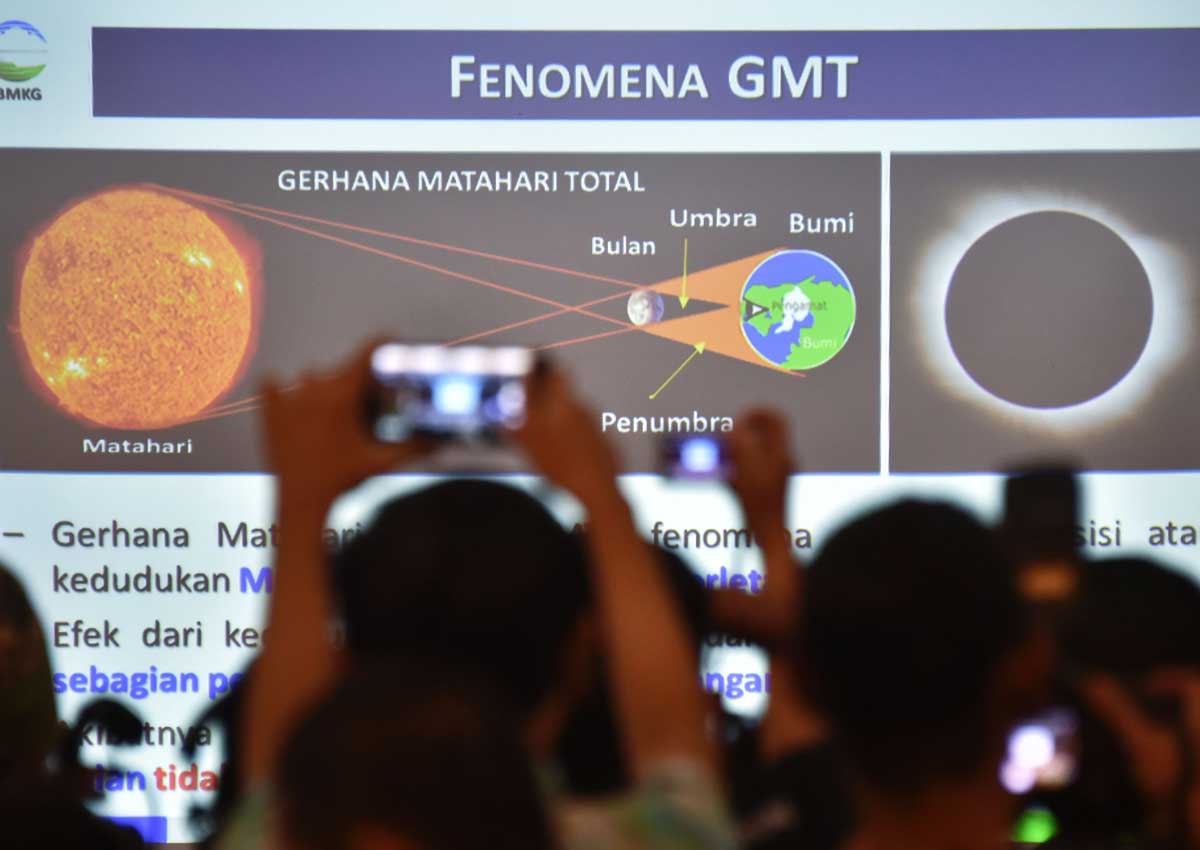Jakarta – A total solar eclipse will sweep across the vast Indonesian archipelago this week, witnessed by hordes of sky gazers and marked by parties, colourful tribal rituals and Muslim prayers.
From jungle-clad Sumatra in the west to the spice-fringed Maluku Islands in the east, people will flock Wednesday to watch the eclipse travel in a broad arc across the world’s biggest archipelago nation.
About 10,000 foreign visitors and 100,000 Indonesian tourists are expected to view the spectacle, and special events have been organised across the country, from a festival featuring live bands to dragon boat races.
Among the visitors will be a Thai princess who recently hit the headlines after a $40,000 toilet custom-built for her visit to Cambodia went unused.
Hotels in the best viewing spots filled up weeks ago – in one city officials have had to find extra space for tourists on boats.
“This is a very special year because we have this phenomenon – a tourism attraction created by God,” I Gde Pitana, the government’s head of foreign tourism, told AFP. “We are very lucky”.
For many in the world’s most populous Muslim-majority country, the experience will be deeply spiritual, with Islamic leaders urging the faithful to perform special eclipse prayers.
“Our Prophet Mohammed said the prayer signifies the greatness of Allah, who created this wonderful phenomenon,” said Ma’ruf Amin, chairman of the Indonesian Ulema Council, the country’s top Islamic clerical body.
But some of Indonesia’s tribespeople – up to 70 million of the country’s 250 million inhabitants are indigenous peoples – are fearful of the phenomenon.
Members of the Dayak tribe in one part of Borneo island, known for their elaborate tattoos and costumes, will be performing a ritual to ensure it does not last too long.
The Balian Ba Ampar-Ampar involves traditional music, chanting mantras and giving offerings of flowers and incense to ensure the sun, the source of life, does not disappear.
The total eclipse will sweep across 12 of Indonesia’s 34 provinces, which stretches about 3,000 miles (5,000 kilometres) from east to west, before heading across the Pacific Ocean.
Partial eclipses will be visible in northern Australia and parts of Southeast Asia.
The moon will begin moving across the sun on Indonesia’s main western island of Sumatra at around 6:20 am (2320 GMT Tuesday), before the eclipse sweeps across Sulawesi and Borneo, then moves over the Malukus and heads out into the ocean.
One of the most popular events for foreign tourists will be a festival close to Palu, in Sulawesi, while traditional dances and other performances are taking place right across the ethnically diverse archipelago.
Ternate in the Malukus has proven such a popular eclipse-viewing spot that officials have had to find extra accommodation in boats after the city’s 1,500 hotel rooms filled up, local tourism chief Anas Cenoras told AFP.
Thai Princess Maha Chakri Sirindhorn has chosen the city to view the phenomenon – but officials insist that no luxury commode has been built for her on this occasion.
Scientists are also flocking to Indonesia. A four-member team from NASA is heading to Maba, a small town in the Maluku Islands where the total eclipse will occur for around three minutes, one of the longest times it can be seen.
The last total solar eclipse occurred on March 20, 2015, only visible from the Faroe Islands and Norway’s Arctic Svalbard archipelago.
Total eclipses occur when the moon moves between the Earth and the Sun, and the three bodies align precisely.
As seen from Earth, the moon is just broad enough to cover the solar face, creating a breath-taking silver halo in an indigo sky. For many astronomers it is the ultimate experience.
“Anybody who has an opportunity should go and watch the solar eclipse – it is a life-changing experience,” said Nat Gopalswamy, a NASA astrophysicist coming to Indonesia for the event.































